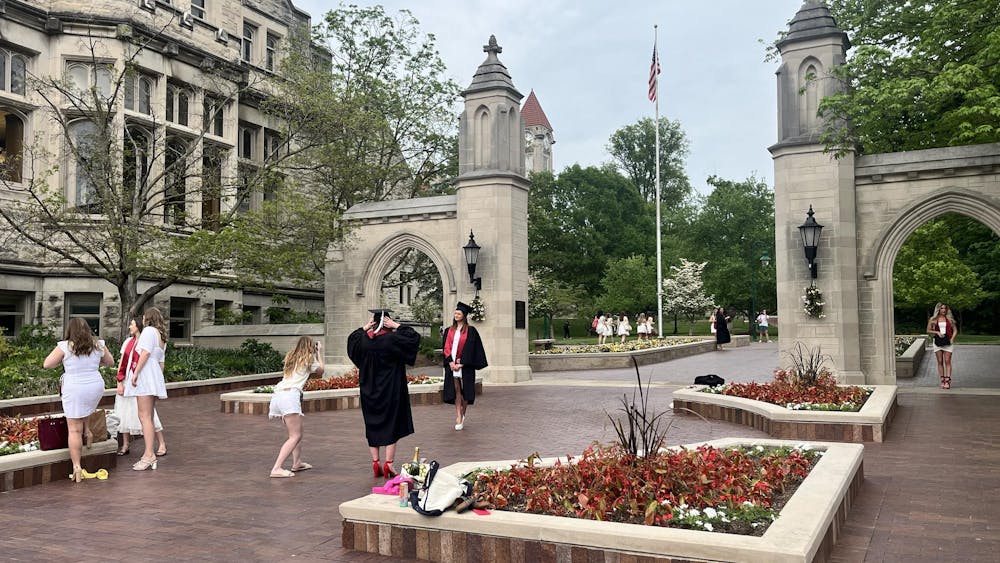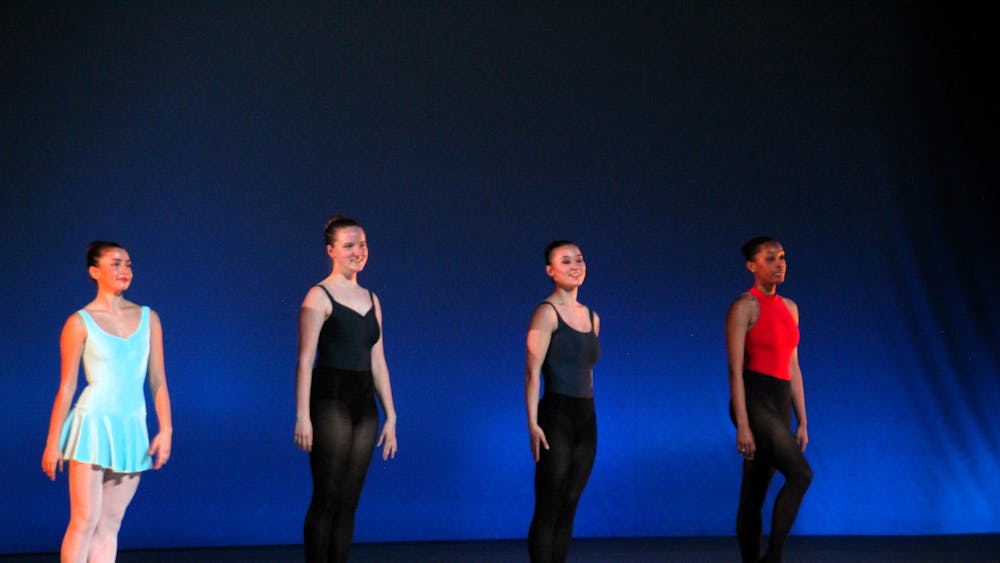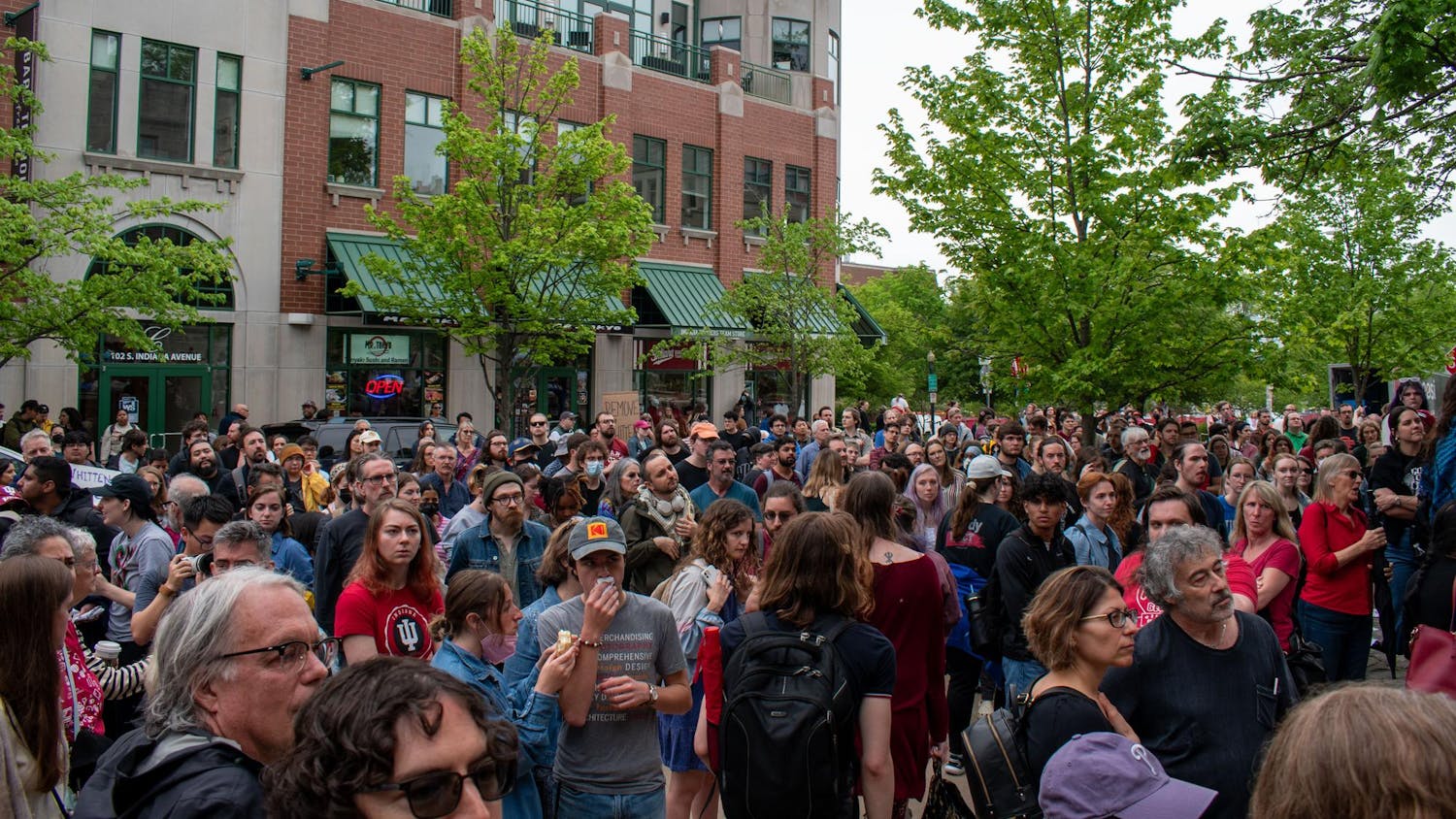As you step into the darkened room, you hear faintly muddled music with voice over that sounds familiar. Lights are flashing on huge screens in a blurry visual cacophony. Pretty soon the pieces start to fit together: you are watching David Letterman. But surely the reception can't be this bad?\nJason Salavon, a 33-year-old artist who has shown his work in exhibits across the U.S. as well as internationally is displaying his new art piece, "Late-Night Triptych" also known as "Late Night Triad," in the IU School of Fine Arts Gallery's "Of the Everyday" exhibition. This is the second week of the show, which began on Sept. 2 and will run until Oct. 4.\nIn 'Triptych', Salavon overlaps several months of the opening monologues from David Letterman, Conan O'Brien, and Jay Leno's shows to condense each host into a wavy virtual essence. The images are arranged side by side on three screens so it is possible to watch each talk host beginning his show hundreds of times simultaneously. While portraying Letterman, O'Brien, and Leno as cultural icons, the piece allows the viewer to compare their entertainment styles. \n"With the triad, there's an interest in the nightly repetition of these … shows," Salavon said. "There's a ghostly structure."\nSalavon is also showing "Golum" in the SoFa Gallery's exhibit. An interactive exhibit, it allows the viewer to scan through 100,000 different images using a track ball. Each image represents a different digitally produced abstract painting. Salavon has selected three of the digital paintings for printing and these have been hung on the walls of the gallery next to the interactive exhibit. Every time a gallery displays "Golum," the artist chooses different paintings to be printed.\n"I had seen ["Golum"] installed at a gallery in Chicago," said Betsy Stirratt, director of the SoFa Gallery. "I knew that it was something we had to have."\nStirratt was instrumental in bringing Salavon to IU. However, Salavon's ties to the Hoosier state may also have played a part in his willingness to exhibit his work at the university.\n"It's just a very cool coincidence: I was born in Indianapolis," he said. \nSalavon added that his father, who was a painter, spent some time studying art in Indiana and used to travel to Bloomington frequently.\n"There's this kind of cool full circle thing with me coming back to exhibit at IU," he said.\nOddly enough, considering his father's artistic background, Salavon didn't start out wanting to be a painter.\n"I actually didn't want to be an artist at all," he said, adding that math and science classes fascinated him throughout high school.\nIn fact, the first time Salavon considered entering the art world was while working towards his bachelor's degree at the University of Texas.\n"I took a drawing class as an elective in freshman year," he said. "By the time I was graduating from undergrad I was really immersed in the idea of making art my profession."\nSalavon earned his graduate degree from the School of the Art Institute of Chicago, and began showing his art immediately after graduation. Natalie Domchenko, director of the Peter Miller Gallery in Chicago, said that she first saw Salavon's work in 1997 when she and Miller attended a Masters of Fine Arts show at the Art Institute.\n"We saw the work that he had up … and were sufficiently engaged by it that we decided we wanted to show him in the gallery," she said. "There was a feeling of seeing something that we hadn't seen before."\nSalavon believes that what makes each of his creations special is the underlying meaning that ties his works together. \n"I get involved in populations of data," he said, adding that his interest lies in "what defines (a group of things) as a class … and what the distinctions are between individual members of the class."\nAs a digital artist, Salavon feels that it is more difficult to create continuity between each of his works because they are not hand produced. He therefore places great importance on his ability to tie exhibits together by creating each of his works with a unified theme in mind.\n"I don't really have a signature style in terms of a visual style," Salavon said. "Something in the artist's vision needs to come out over a body of work."\nOne thing that is self-evident in Salavon's work is his comfort with all things virtual and computer generated. \n"When I was 7 years old 'Star Wars' came out," he said, laughing. "I grew up with video games all around and just sort of had an affinity with that kind of stuff."\nSharing his work with a digital generation is one of the reasons Salavon enjoys doing shows on college campuses.\n"(My exhibits) tend to be a quicker read for younger people who have been steeped in media," he said.\nAlthough Salavon now earns a living by selling his art, he worked odd jobs in the computer game industry for a while after leaving college. One of his first positions was with a company that made a football game called "Blitz 2000." Salavon said that video game design, especially "that sort of cartoony, exaggerated stuff," still appeals to him. \n"I think it's very interesting we're to the point now … that you could design a piece of software that can create paintings," he said.\n-- Contact staff writer Elise Baker at elimbake@indiana.edu.
SoFa gallery exhibits digital art
Get stories like this in your inbox
Subscribe





